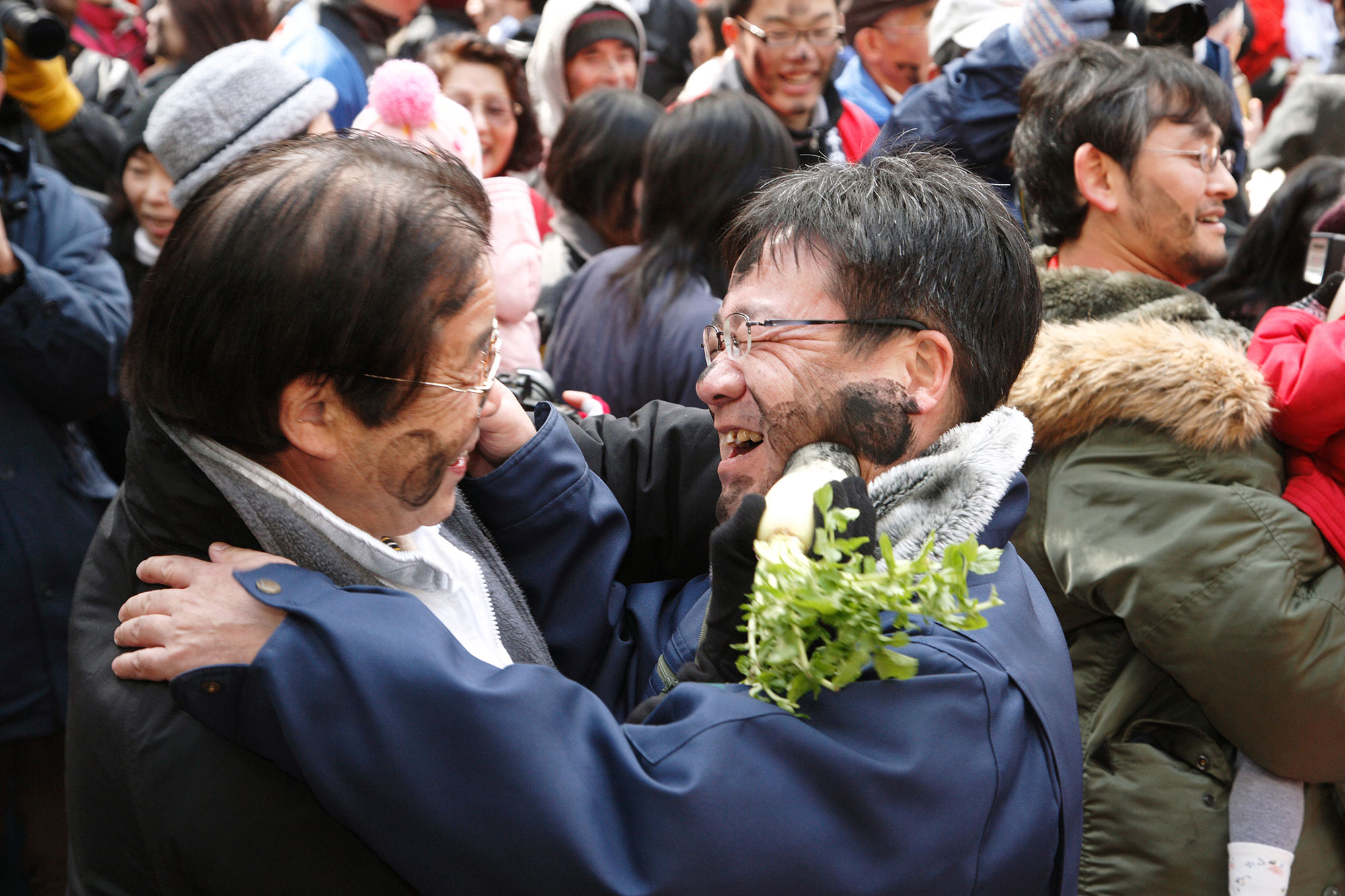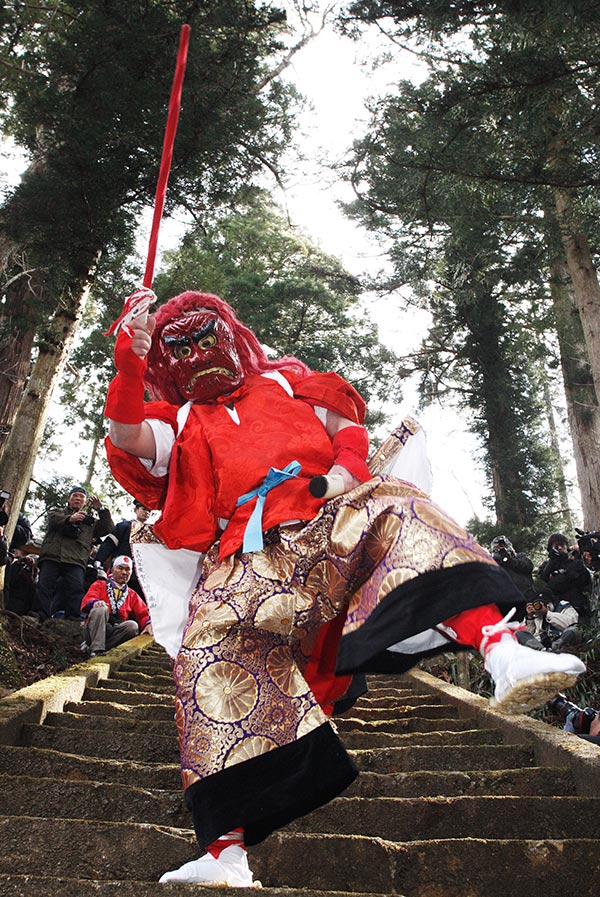

- Kennan Area
- Industry・Industrial Heritage
- Traditional Arts・Festival
Fujikawachi Valley / Kiura Mine and Sumitsuke Festival
Photography/TAKEUCHI Yasunori
Feel the Energy of the Old Times
As it’s sung in a local lullaby “Uta-Genka,” Ume of Saiki (formerly known as Town of Ume) is a world of its own surrounded by tall mountains. It is embraced in mountains that easily surpass 1,000 meters in height from the border of Miyazaki Prefecture at Mount Katamuki (altitude of 1,605 meters), and Kita River, a tributary of Gokase River system, a different water system from the bordering City of Bungo Ono.
If you go up its tributary Kuwabara River further and deeper, you will find the Fujikawachi Valley, and if you go up the Nakadake River, you will see Kiura Mine in the mountains.
The beauty of the Fujikawachi valley was well known since the old times. Now it is a scenic spot designated by the prefecture. It is in erosional forms of granite, forming a deep valley, particularly a large rock gouged in a long groove shape called “Gutter,” or the pot holes of various sizes line up, and the oversized pot holes connect with each other like “Hyoutanbuchi (famous abyss in Miyazaki, shaped like a gourd).” Toddlers will be able to play in the monolithic shallow water called “Senmaidaira.” Walkways and bungalows are available, and you may also enjoy a hot spring called “Yu-topia” in the village.
Kiura Mine is said to have been developed in the 16th century. The Oka clan managed the mine, and they reportedly presented 500 kin (unit of weight, approximately 300kg) of lead to the Shogunate during the Keichou era. Aside from the lead, tin, copper, and silver were also produced. It was at first entrusted to the private sector, but after the Genroku era, the clan was involved in the management directly. They placed a bugyou (magistrate) and otona, kumigashira, sanmokudai (officers for the management of the mine) underneath to facilitate the mining.
Most of the residents were involved in the mining, and they were paid with rice, where men of age 6 and over were provided 5 gou of rice, and women of the same were paid 4 gou of rice. The veins covered the entire Kiura district, a town structure was established, and they even had a red-light district. There is still ruins of mining shaft called mabu.
Although the mountain was practically closed in 1957, there is still a traditional event called “Sumitsuke Festival” held in February. They hold the festival once every other year, where participants smear some soot on daikon radish and daub at each other. Not just local residents participate in the event. There’s no exception even if you are a tourist or a police officer, everyone will have a black painted face.

Koujin god appearing in the Sumitsuke Festival.

